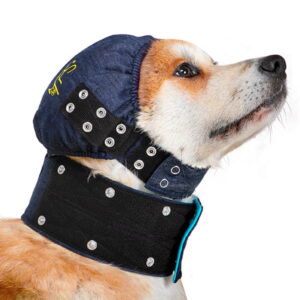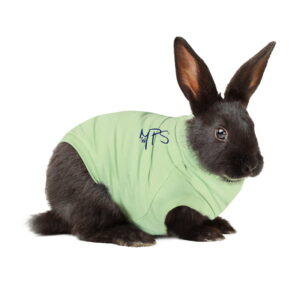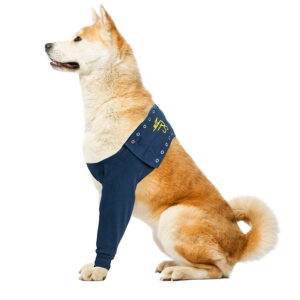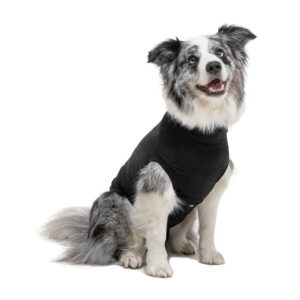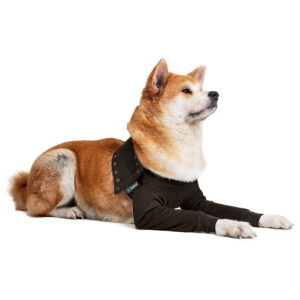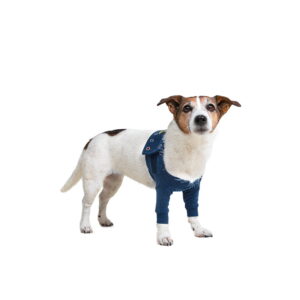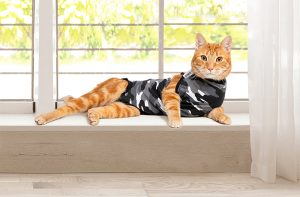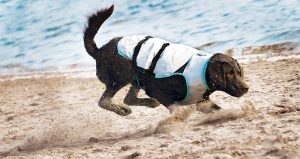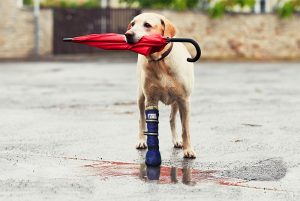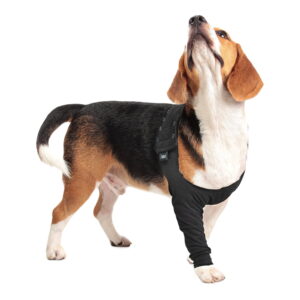Why Cats Hate Cones (and What to Do Instead)
Cats often hate cones because they block peripheral vision, press on whiskers, affect balance, and stop normal grooming. A recovery suit is a vet-approved alternative that prevents licking and scratching without covering the head, so most cats can eat, sleep, and move more comfortably while they heal.
- Shop Cat Recovery Suits (Suitical and MPS): https://www.tailme.co.za/product-category/medical-recovery/
- View Size Guide: https://www.tailme.co.za/product-category/medical-recovery/
- Compare Alternatives: see the quick guide below
- Questions? TailTalk Support: https://www.tailme.co.za/contact-us/
TL;DR
- Cones work, but many cats find them stressful because of vision, whisker, and balance disruption.
- If your cat cannot eat, sleep, or navigate with a cone, a recovery suit is usually the calmest, safest alternative.
- Suits keep mouths away from stitches and hot spots while preserving vision and mobility.
- Always follow your vet’s advice; use cones when a suit will not protect the specific wound.
By Gavin Levenstein • Updated 13 May 2025
Why Vets Recommend Cones (and When They are Necessary)
Cones, also called e-collars, Elizabethan collars, buster collars, or lampshade collars, stop cats from licking, biting, or scratching wounds and stitches. There are times a cone is still the right choice:
- Head, face, or neck procedures where a suit cannot prevent access
- Drains, bandages, or external fixators the cat might chew
- Highly determined cats or when unsupervised for long periods
- Severe skin flare-ups on areas a suit cannot fully cover
When are alternatives appropriate?
- Spay or neuter incisions, abdominal and thoracic surgeries, flank shaves, minor dermal procedures, and many hot spots or allergies where the body area can be covered
- Calm, indoor cats with attentive caregivers who can check the site daily
Always confirm with your veterinarian. The goal is simple: protect the wound without adding unnecessary stress.
How Cones Affect Cats: Vision, Whiskers, Balance, Grooming
Cats are built to move quietly and precisely. Cones can get in the way.
- Balance and spatial awareness: The weight and bulk around the neck change head position and can throw off a cat’s vestibular system. This is why some cats stumble, misjudge jumps, or freeze with a cone.
- Whisker interference: Whiskers are sensory superpowers. When the cone presses on or blocks them, many cats feel trapped or disoriented.
- Restricted peripheral vision: Cones limit side vision, so sudden noises or movements can feel startling. Some cats become clingier; others hide.
- Eating and drinking: If your cat cannot get their face into the bowl or is too worried to eat with the cone on, nutrition and hydration can suffer.
- Grooming shutdown and stress: Cats are fastidious groomers. When grooming stops entirely, stress goes up. Some cats look depressed with a cone or show learned helplessness, especially after spay.
None of this makes cones cruel by default — they are often essential — but it explains why your cat may hate the cone and why a lower-stress alternative can help.
Cone Alternatives for Cats
Here is a quick comparison to help you choose.
- Hard cones (standard e-collars)
– Pros: Strong protection, widest coverage – Cons: Blocks vision and whiskers; bumping into furniture; many cats will not eat or sleep well
- Soft cones
– Pros: Gentler edges, a little more flexible – Cons: Still restricts vision and grooming; persistent cats can fold them
- Inflatable collars
– Pros: Comfy neck pillow feel; better vision; good for some upper-body sites – Cons: Determined cats can reach abdomen, tail, or limbs; not suitable after most spays
- Recovery suits (best for most cats)
– Pros: Full vision, whisker freedom, normal movement, easy litter use, less stress; great after spay/neuter and many abdominal or flank procedures – Cons: Requires correct sizing; needs daily checks; not ideal for head/neck wounds
Onesie vs recovery suit
- A human baby onesie can twist, trap litter, or leave gaps. A medical recovery shirt is designed for incision access, hygiene, and feline movement. For safety and cleanliness, choose a purpose-built suit.
Shop Cat Recovery Suits: Suitical and MPS Medical Pet Shirt
- Browse: https://www.tailme.co.za/product-category/medical-recovery/
- Popular options in South Africa: Suitical Recovery Suit – Cat; MPS Shirt – Cat
Recovery Suits: Why They Help Most Cats
- Full range of vision and whisker freedom: no lampshade effect, less bumping into things
- Better balance and mobility: soft, stretchy fabrics move with the body
- Grooming comfort: cats can still groom safely around protected areas
- Easier eating and resting: fewer mealtime battles and better sleep
- Compliance: many cats adjust within a day; owners report calmer recoveries
Evidence and vet perspective
- AAFP and AVMA guidance emphasises reducing stress for faster healing and better compliance. For body incisions, a fitted recovery garment can be a humane alternative to an e-collar when your vet agrees. See references below.
Call to action
- Shop Cat Recovery Suits (Suitical and MPS): https://www.tailme.co.za/product-category/medical-recovery/
- Compare sizes and fit tips: see next section and our size guide.
How to Choose and Fit a Cat Recovery Suit
Measure before you buy
- Weight: a quick starting point for size
- Chest girth: measure just behind the front legs at the widest point
- Body length: from base of neck to base of tail
- Neck girth: some suits need this too
Fit checklist
- Snug but not tight: you should slide two fingers under the fabric
- No gaping at the belly or shoulders
- Incision is fully covered, and the cat can still extend legs to walk and jump
- Litter-friendly: rear opening aligns and fastens securely
Common questions
- How tight should it be? Secure and form-fitting, never restrictive. Watch breathing, gait, and skin marks.
- Can cats use the litter box in a recovery suit? Yes — choose a design with a clean, adjustable rear opening.
- Can my cat sleep in a recovery suit? Generally yes. Read our guide: Can My Pet Sleep in a Recovery Suit? https://www.tailme.co.za/can-my-pet-sleep-in-a-recovery-suit/
- Materials: breathable, washable cotton or technical blends; antimicrobial linings help with hygiene.
More on apparel quality
- What makes a good pet shirt? https://www.tailme.co.za/what-makes-a-good-pet-shirt/
HowTo: Transition From Cone to Recovery Suit
1) Get vet approval, especially after spay/neuter or abdominal surgery. 2) Measure and choose the right size (see fit checklist above). 3) Let your cat sniff the suit; reward with a treat. 4) Put the suit on calmly: head first, then front legs, then body and fasteners. 5) Check freedom of movement; adjust closures; watch for rubbing. 6) Monitor for 30–60 minutes. Offer water and a small snack. 7) Inspect the incision 2–3 times daily. Use the suit’s access flap; keep the area dry.
When to Call Your Vet
- Redness, heat, swelling, discharge, or a bad smell at the incision
- Your cat is not eating or drinking for 24 hours after going home
- Persistent vomiting or diarrhoea
- Panting, laboured breathing, or lethargy
- Your cat has wriggled out of protection or chewed stitches
Care and Washing
- Wash the suit before first use
- Daily spot-check; replace with a dry spare if soiled
- Machine wash cold; mild detergent; no fabric softener
- Air dry to protect elasticity
- Keep a backup suit so one can be worn while the other dries
FAQs
- Why do cats need cones?
To stop licking, biting, or scratching that could open wounds or infect stitches. They are effective barriers when needed.
- Are recovery suits safe for cats overnight?
Yes, when correctly sized and approved by your vet. Check the incision morning and night.
- How tight should a recovery suit be?
Snug like a T-shirt, not compressive. Two-finger rule under the fabric; no chafing.
- Can a recovery suit replace a cone after spay/neuter?
For most routine spays/neuters, yes, with vet approval. It should fully cover the incision and fit well.
- How do I size a recovery suit for my cat?
Measure weight, chest girth, body length, and sometimes neck girth. Use our size guide and when in doubt, chat to us with your measurements.
- How often should I check the incision when using a suit?
At least twice daily. Open the access flap without removing the suit.
- Can my cat eat and use the litter box in a suit?
Yes. Properly fitted suits allow normal eating, drinking, and litter use.
Real Owner Stories
- Cat keeps bumping into things with cone: one week of stress ended the day we switched to an MPS shirt. She ate normally that evening and stopped hiding.
- Cat will not keep cone on after spay: tried a soft cone and inflatable collar; both failed. The Suitical suit stayed on, and the incision healed cleanly.
Read our case study: Licking wounds in cats — what finally worked https://www.tailme.co.za/case-study-licking-wound-on-a-cat/
Downloadable
Spay/neuter recovery checklist (day-by-day). Get the free PDF via TailTalk. https://www.tailme.co.za/tailtalk/
Shopping in South Africa
- Vet-approved recovery suits for cats
- Fast shipping nationwide and easy returns
- Bundle idea: spare suit plus antimicrobial wipes for stress-free changes
Shop Cat Recovery Suits (Suitical and MPS): https://www.tailme.co.za/product-category/medical-recovery/
References
- American Association of Feline Practitioners (AAFP): Feline stress reduction and home care guidance
- American Veterinary Medical Association (AVMA): Postoperative care and e-collar use
- Veterinary behaviour literature on stress, grooming, and compliance during recovery
Image suggestions and alt text
- Cat wearing Elizabethan cone struggling to eat
- Cat in Suitical recovery suit after spay, relaxing on sofa
- How to measure a cat for a recovery suit: chest girth and body length
Internal links
- Can My Pet Sleep in a Recovery Suit? https://www.tailme.co.za/can-my-pet-sleep-in-a-recovery-suit/
- What Makes a Good Pet Shirt? https://www.tailme.co.za/what-makes-a-good-pet-shirt/
- Licking wounds case study (cat): https://www.tailme.co.za/case-study-licking-wound-on-a-cat/
- Medical Recovery category: https://www.tailme.co.za/product-category/medical-recovery/
Note: Always follow your veterinarian’s instructions for your cat’s specific procedure and temperament.

